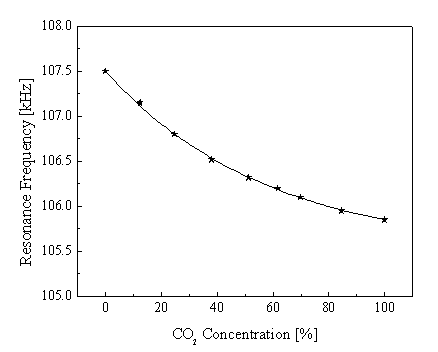|
|
Dr. Dimitris Kouzoudis
|
|
|
Dr. Vladimiros Nikolakis
|
|
|
Our lab focuses on the design of zeo-magnetic sensors for detection of various gasses such as CO2, N2, CH4. This is accomplished by developing thin Al/Si zeolite films (20 - 50 μm) on an amorphous Fe40Ni38Mo4B18 metglass magnetoelastic ribbon (17 mm x 6 mm x 28 μm ).
Shown below is the response of a zeo-magnetic sensor in an alernating CO2/ N2 enviroment (left) and in a mixture of CO2 - N2 at various concentrations (right)


All measurements are done with the help of the fully-automated magnetoelastic resonator (left). Film deposition and gas mixing are performed at the chemistry lab (right)
|
|
The magnetoelastic sensors are the magnetic analog of an acoustic bell. Under the influence of an alternating magnetic field, they resonate at a characteristic frequency which depends among other quantities, on the mass load on the sensor. A suitable microporous inorganic cover film, such as zeolite film, can selectively adsorb the desired gas. Changes in the resonance frequency reflect the amount of the adsorbed gas. Click here for a Power Point presentation that demonstrates the principle. Also click here to learn more about zeolites.
Dr. Nikos Bouropoulos
Lecturer
Material Science Department
University of Patras, 26504, Patra
Greece
nbouro@upatras.gr
Insertion of a magnetoelastic/zeolite strip in a glass vial that was used for our measurements. Since the glass in non-magnetic, information can be easily extracted through the glass. Thus measurements can be done inside sealed, opaque containers, without the need of any direct physical connections such as wires, nor any specific alignment requirements.